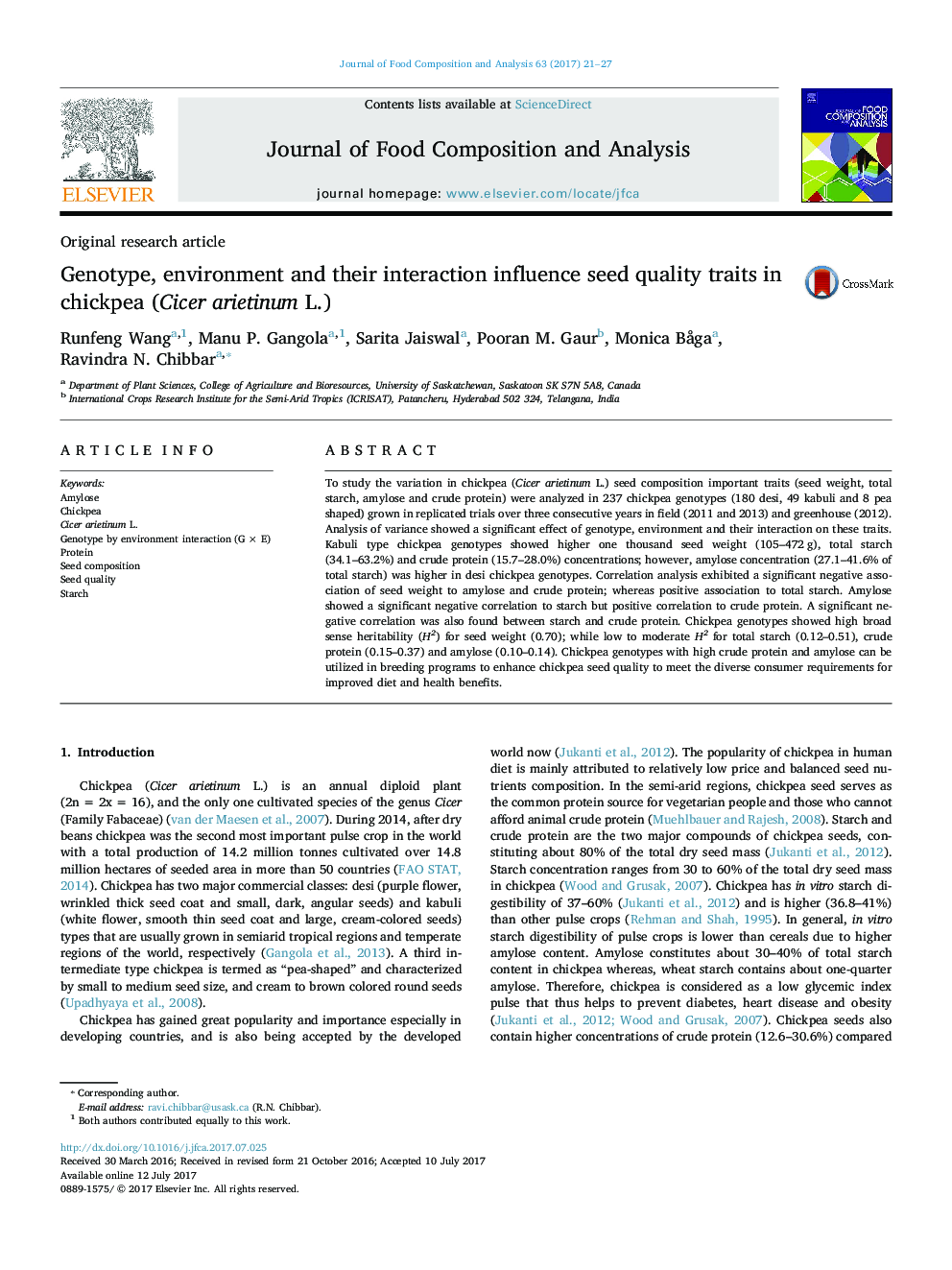| کد مقاله | کد نشریه | سال انتشار | مقاله انگلیسی | نسخه تمام متن |
|---|---|---|---|---|
| 5136811 | 1494479 | 2017 | 7 صفحه PDF | دانلود رایگان |

- Genotype, environment and their interaction affect chickpea seed composition.
- Kabuli chickpea has higher starch and protein concentration than desi type.
- Desi chickpea starch has higher amylose concentration than kabuli type.
- Amylose and protein concentrations showed negative correlation with starch.
- Seed weight showed the highest broad sense heritability in desi and kabuli types.
To study the variation in chickpea (Cicer arietinum L.) seed composition important traits (seed weight, total starch, amylose and crude protein) were analyzed in 237 chickpea genotypes (180 desi, 49 kabuli and 8 pea shaped) grown in replicated trials over three consecutive years in field (2011 and 2013) and greenhouse (2012). Analysis of variance showed a significant effect of genotype, environment and their interaction on these traits. Kabuli type chickpea genotypes showed higher one thousand seed weight (105-472Â g), total starch (34.1-63.2%) and crude protein (15.7-28.0%) concentrations; however, amylose concentration (27.1-41.6% of total starch) was higher in desi chickpea genotypes. Correlation analysis exhibited a significant negative association of seed weight to amylose and crude protein; whereas positive association to total starch. Amylose showed a significant negative correlation to starch but positive correlation to crude protein. A significant negative correlation was also found between starch and crude protein. Chickpea genotypes showed high broad sense heritability (H2) for seed weight (0.70); while low to moderate H2 for total starch (0.12-0.51), crude protein (0.15-0.37) and amylose (0.10-0.14). Chickpea genotypes with high crude protein and amylose can be utilized in breeding programs to enhance chickpea seed quality to meet the diverse consumer requirements for improved diet and health benefits.
Journal: Journal of Food Composition and Analysis - Volume 63, October 2017, Pages 21-27